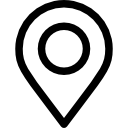







Phytosanitary treatments
Inicio > Services> Phytosanitary treatments
These types of treatments are designed to prevent or combat any pest or disease of our plants and trees. There are two types:
01
Indicated to avoid future diseases, or minimize the damage that potential pests may cause in our green areas. This type of treatment is generally carried out in the winter months.
02
Focused on alleviating damage caused by unwanted pests or agents and diseases that can negatively affect the health of our gardens, plants or trees.
Each pest has its treatment period, although the vast majority is treated during the Spring – Summer seasons, there are also some other pests that should be treated at other times, such as in the Fall.
At H2O Garden, we always carry out these treatments by qualified professional applicators of phytosanitary products authorized by the Ministry of Agriculture, using phytosanitary products with minimal side effects for both our plants and the environment.
The red spider is one of the most common pests that affect plants, both those that live outdoors and indoors. Although we refer to it as a “spider,” it is actually a mite that multiplies very quickly, so if nothing is done to prevent it, it causes many problems for our plants since it feeds on the cells of the leaves.
Wasps expand their colonies between spring and the beginning of summer. As an adult, the wasp feeds on the nectar of flowers and in the larval stage its diet consists of larvae.
Rose caterpillars are not really caterpillars , although they seem that way; They are larvae. In the garden, we find them especially in rose bushes, alder bushes and currant bushes. They always feed in groups, a single leaf can house a dozen of them, and they will do so throughout the leaf, leaving only the central vein.
They normally appear in the middle of spring in the newly sprouted crown of the tree. It can reproduce up to four times between June and October if there are high temperatures and lack of rain. When the adults make holes in the leaves, the larvae very quickly eat the green parenchyma, leaving aside the veins and epidermis on the back, and can completely defoliate the elm, weakening it and leaving it exposed to attack by other boring insects or fungal transmitters.
They normally appear in mid-spring in the newly sprouted crown of the tree. It can reproduce up to four times between June and October if there are high temperatures and lack of rain. When the adults make holes in the leaves, the larvae very quickly eat the green parenchyma, leaving aside the veins and epidermis on the back, and can completely defoliate the elm, weakening it and leaving it exposed to attack by other boring insects or fungal transmitters.
It feeds on the needles of pines and other conifers. It is the most important pest of pine forests and owes its name “Processionary” to the fact that it moves in a group in a line, like a procession. There are various types of treatment for its control, depending on the time of year in which it is carried out.
The aphid is one of the parasites that most frequently causes damage to plants. plants, in addition, their multiplication is very rapid. On the back of their abdomen they have a pair of cornicles through which they expel a sugary substance that serves as their defense. They suck the sap from the plant, producing a honeydew, weakening the plant, deforming the fruits and leaves and creating discoloration. In addition, they are vectors of viruses, favor the appearance of Sooty mold (sooty mold) and attract ants. They prefer tender tissues, which is why they are preferably found in the new shoots of leaves, flower buds of plants and shrubs.
We only use necessary technical and statistical cookies. If you continue browsing our website we will understand that you accept its use. Visit our cookie policy:Legal notice.